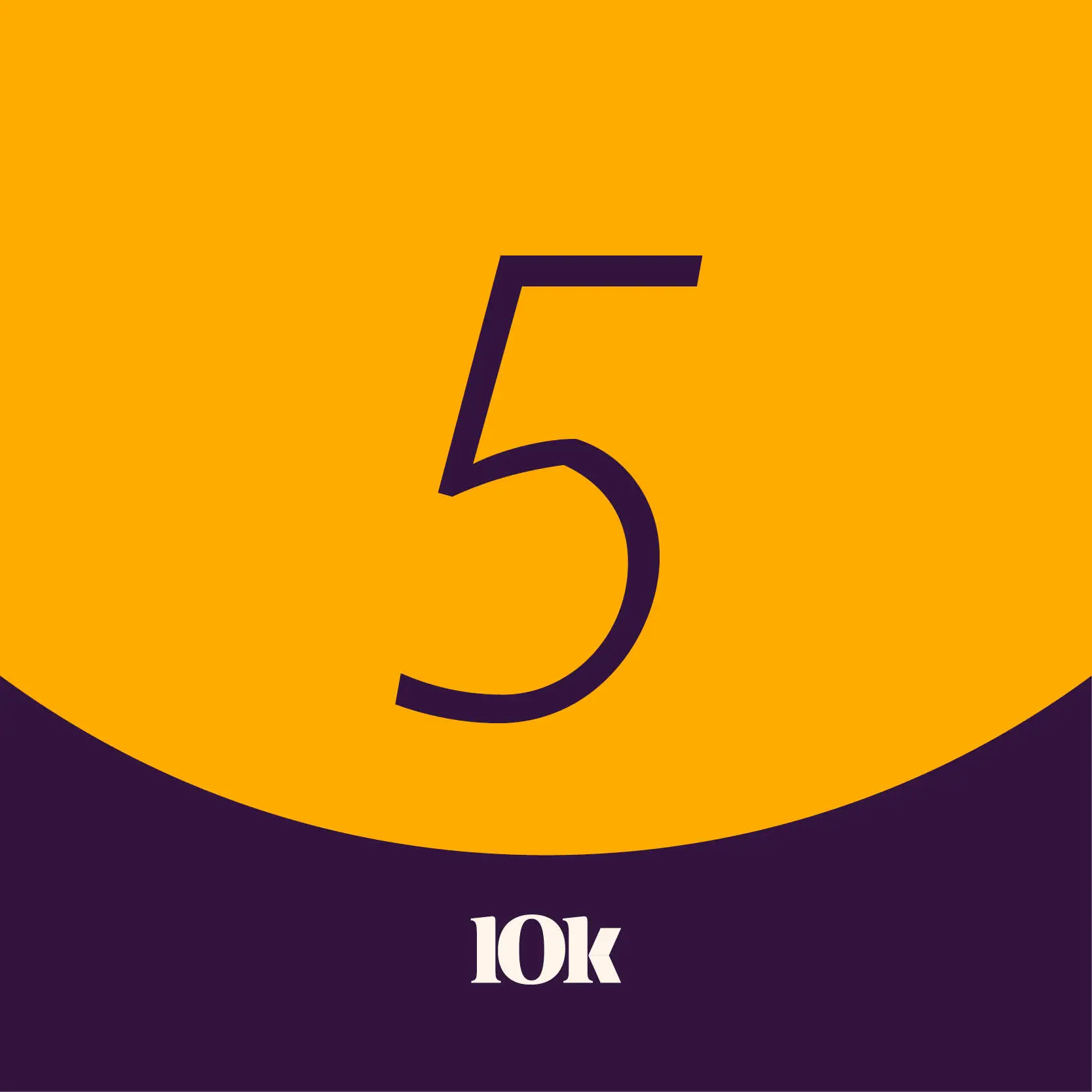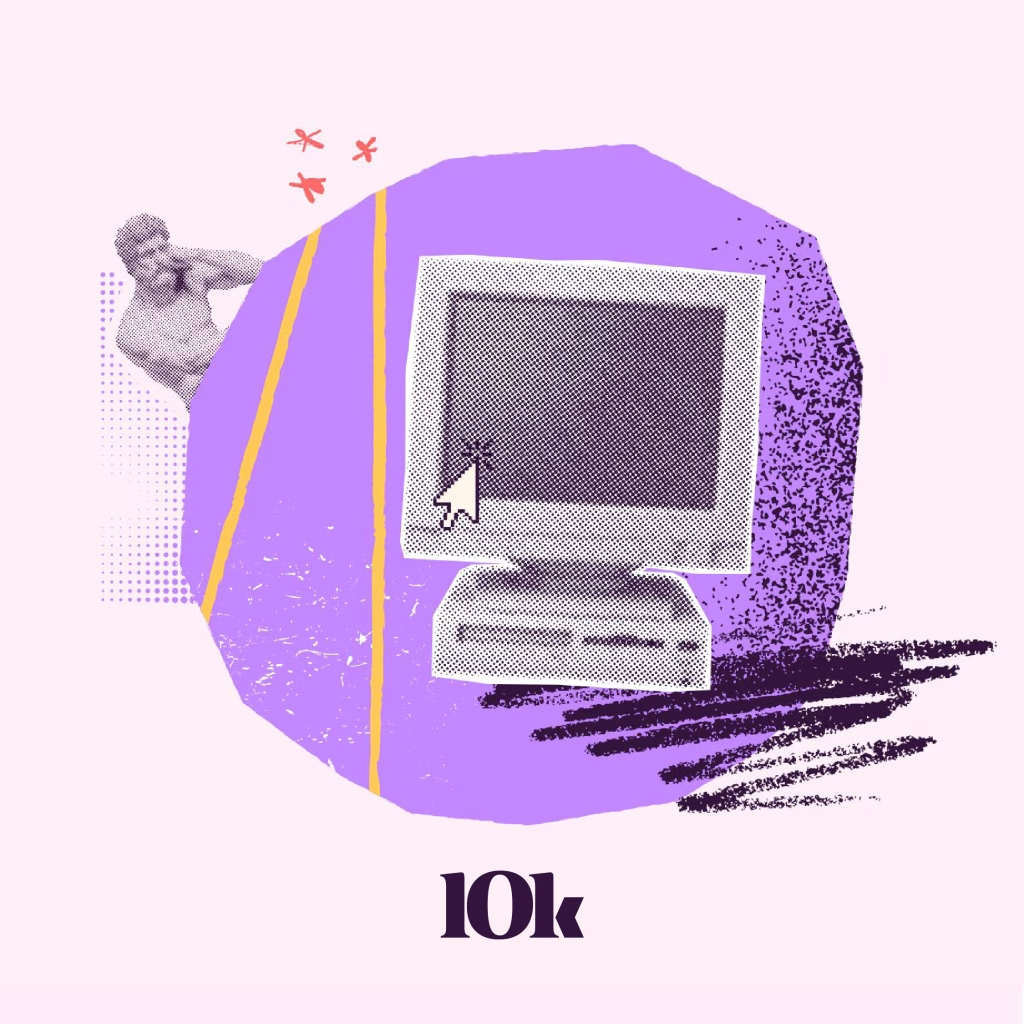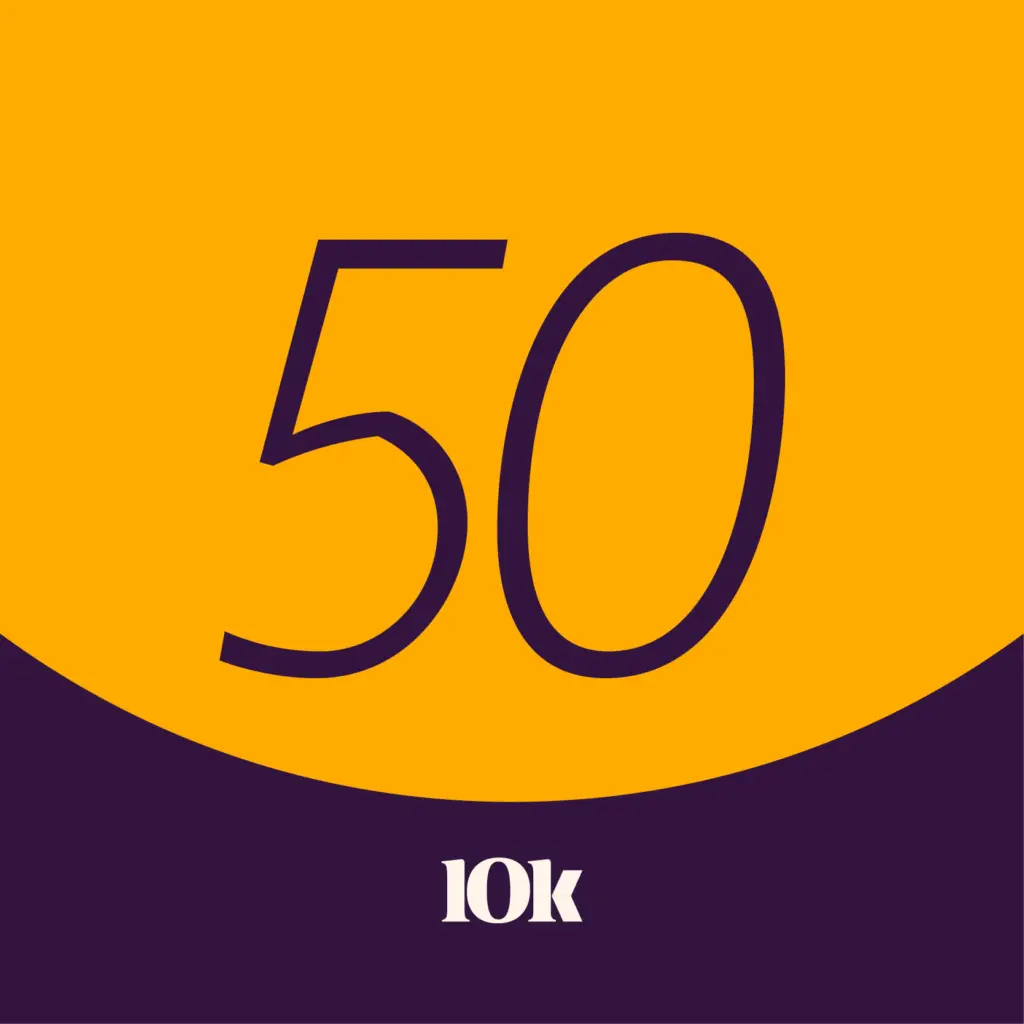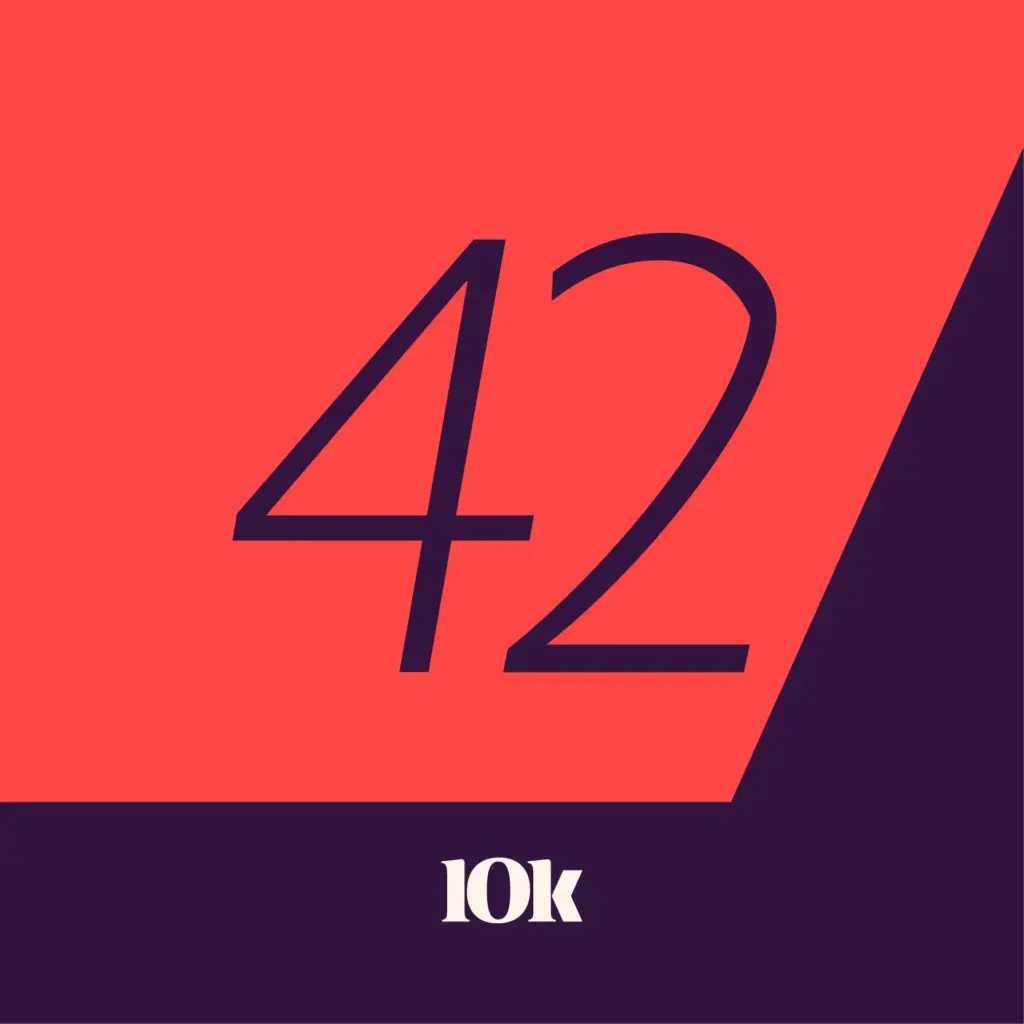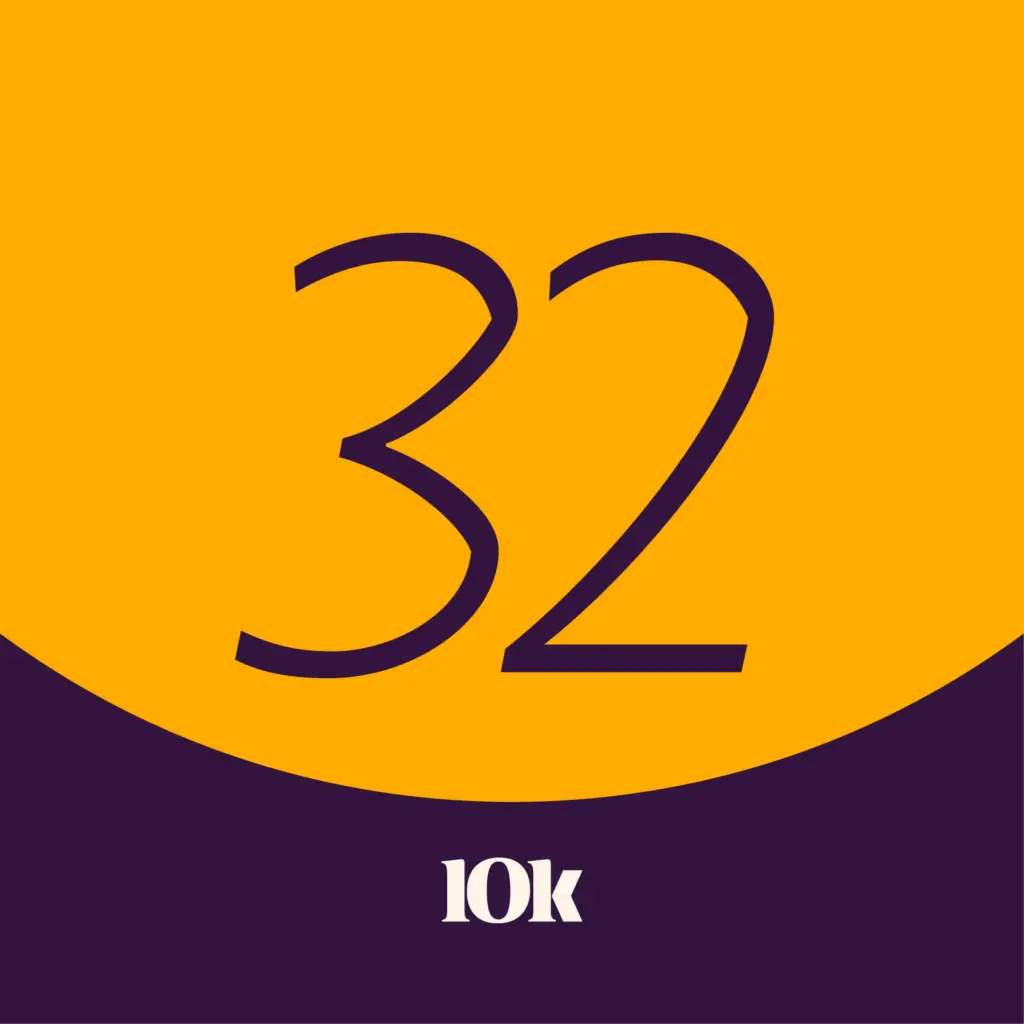Earlier this year, two of our own headed to Experience Design Week in Denver, Colorado, to give a keynote presentation and participate in the conference.
On this episode, Andy Van Solkema, VP of Digital Strategy, and Josh Paro, User Experience Lead, recap the talk they gave, titled, The Complex New Realities of Designing a Successful Experience, and share a bit about their time in Denver.
Andy & Josh cover some common considerations that are left out of the experience design conversation, including budgets, technical debt, cultural legacies, business models, and more.
Enjoy!
This episode is sponsored by:

This podcast content was created prior to our rebrand and may contain references to our previous name (OST) and brand elements. Although our brand has changed, the information shared continues to be relevant and valuable.
Episode Transcript
Lizzie Williams: Hey, everybody. On this episode of Ten Thousand Feet, The OST Podcast, we had Josh Paro, our user experience lead here at OST and Andy Van Solkema, our VP of Digital Strategy. The two of them were recently out in Denver at the end of February speaking at Experience Design Week and we brought them in to tell us a little bit about what they learned and what they heard. So they’re going to talk to us about that and also a little bit about leprechauns.
Josh Paro: So, yeah, mainly what we’re talking about today is our experience at Experience Design Week. Andy and I gave a keynote presentation at Experience Design Week in Denver called the Complex New Realities of Designing a Successful Experience.
So that’s kind of what we’re going to recap today. So, Andy, I don’t know if you want to just give a brief overview of what the conference was about and why we were there.
View Full Transcript
Andy Van Solkema: Yeah. So I’m going to go back a little bit back in November. The conference planners, Aubrey, who was our contact there reached out to us and said, “Hey, are you interested in being a part of this, this week at Experience Design Week?”
We mulled it over, had a few topics, nothing we’re really that excited about quite frankly. And then I happened to be in a conversation with Josh when I was visiting our Minneapolis office. And we stumbled on this idea that there’s so many forces playing on a good experience that generally a design team or product team are not considering that maybe we should give a talk about everything else other than how to design an experience itself. And we threw that over to the team at Experience Design Week and they loved it.
Josh Paro: So just, I guess maybe a way to introduce one of the themes of our talk is a story that I told that was kind of fun because it was a total left turn for everyone. And that was a story of a leprechaun and his pot of gold.
So I, at one point thought that this was a very common story that like everyone learned, heard in school. And I have yet actually to talk to anyone that has heard it. So I don’t know what that says about my education or where I grew up. But, so the story is Tom, he’s a poor farmer. And he’s walking back to his house from the field one day and he looks up and spots a leprechaun leaning against a tree sleeping, so he rubs his eyes, makes sure that he’s actually seeing what he’s seeing and sure enough it’s there. And he knows from just because everyone knows this, where Tom grows up, that if you catch a leprechaun, it will trade its freedom for its pot of gold. It will bring you to its very pot of gold, give that to you, then you let it go.
So Tom sneaks up, grabs the leprechaun and wakes up and sure enough, first thing it says “If you let me go. I will bring you to my buried pot of gold,” so Tom’s like, “Cool, show the way.” So they walk and walk and walk, leprechaun brings them into a forest, walk for a while, everything looks the same. All the trees look the same.
It’s just, you know, consistent everywhere. And after a while, leprechaun stops and points to the base of a very like plain looking tree and says, if you dig there, you will find, you know, my buried treasure so Tom is elated. He knows that he’s set for life. He doesn’t have anything to dig with so he’s like, “I’m going to go get my shovel. You have to promise me that you’re not going to do anything here.” So Tom looks at the leprechaun and he says, “I’m going to take my scarf and tie it to this tree. You have to promise me to not move my scarf. So it has to be here when I get back.” Leprechaun swears. Tom also knows that leprechauns can’t lie because this is apparently another thing that everyone knows.
Andy Van Solkema: Everybody knows this.
Josh Paro: Everyone knows this. So Tom leaves, runs back to his house, grabs the shovel on its back to where, you know, he thinks the leprechaun was with his, you know, tree. And as soon as he gets to the edge of the forest, he sees that for miles, every single tree in the forest has a scarf exactly like his tied to them. So the leprechaun kept his promise. But Tom still has no idea where this valuable buried treasure is. So the point of that whole story, as I see it, you know, as to where we are today is that that is kind of the landscape that we’re in today. There is value potentially out there. Everywhere there’s value under the surface of everything that we see and touch, but we have no idea where the value is actually buried because everything looks the same.
Andy Van Solkema: Yeah. Yeah. I mean, I think in our talk, we talked about the red scarf representing a data point. So how a forest of red scarves is a whole slew of data points. And what is the opportunity? Where is the opportunity buried in that slew of data which is really where we, where we’ve come today, where a lot of organizations are, is they’re collecting a lot of data and they don’t know what to do with it, which can, in turn, become an experience or an opportunity or a business model or service model, or just new feature that drives value for the customer.
But how do you, how do you create that feedback loop for a team of a product team to make sense of the data, make sense of the qualitative or quantitative data and drive value with that. It was interesting to talk to a number of people at that conference who were focusing on tricks and tools of the trade. Fascinating stuff going on in the design industry, but the things that would affect those experiences were also not being considered, you know, how will data be collected?
What data should we collect? What are some cultural legacies or strongly held beliefs in your organization? What, what, how do budgets come into play? What is technical debt look like? We talked a lot about technical debt with various groups. We talked to one senior UX designer, worked in convenience and retail.
Her first question was about our managed services offering, which I thought that was incredibly insightful from the standpoint of the problem she’s trying to solve was as much an IT problem as it was a design and experience problem. And I guess that’s, I guess that’s the thesis of our talk there, right? Is that the experience can kind of live at the center of the customer value piece, but there are all these other elements that play into what we, what we use to define that experience.
Or we design an experience that is really impactful, but it doesn’t, it never sees the light of day because of some of those factors.
Josh Paro: So fundamentally like really we’re boiling it down to like, as humans, we experience things through sight, sound, touch, taste, feel, and emotion. It’s like, it’s, it’s the core of what has made us human forever.
And where that intersects with what we do today is that there are just a lot of different tools. And now an overwhelming number of data points that companies and designers and developers can do things with to try to somehow enhance that experience or highlight certain parts of it. And from a business standpoint, like that’s kind of become the differentiator, you know, everyone’s thinking, well, how can we make our experience, you know, sort of like stick its head up above everyone else, because everyone’s got roughly the same technology.
Andy Van Solkema: Yeah.
Josh Paro: These days. A lot of the things that used to be pretty inaccessible, you can learn as a ten-year-old and, you know, get a website out there that is plugged into an e-commerce platform.
Like, so like those things have a lot of those things have been automated to the point where anyone can do them. So then it becomes, well, how do we make our thing better? And our whole thesis was really, that is the experience. Experience, a better experience or a different experience is the differentiator between, you know, our product or service and the next persons.
Andy Van Solkema: And there were a number of—there were large and small companies there, but I would say majority was fairly large enterprises who were navigating what experience means to them. So it was primarily product design-focused. There were, there was a number of IT teams there as well. But the reason I bring that point up is it’s to what end, right.
An experience to what end is, there’s a business value or there’s an impact, or there’s a cultural change. There’s something happening where we referenced that we can use an experience to create change. I think 30 years ago, that was the idea of brand, right? Because brand was more piggybacking off of the 50s, 60s, 70s where we were in this, we were in this manufacturing productization mode as a, as a culture.
You had to sell that product. So you created advertising and then branding became something where, oh, now I embody that brand and it was about, it was about telling a story that I wanted to be a part of, but you could do that with a little bit of romance, hype. And I think part of the experience world we live in now is, I don’t want to say people are cynical. I think they’re wiser in the sense that they want authenticity. And so if that, if that relationship with that experience that product you buy the user experience is simple, it seems like people understand me, it seems like the way that I engage with a, with a person or an AI is real I know that I can trust them in the way that they’re collecting my data.
All of those things are a factor of the experience because they create the emotion to your point that really drives how I feel connected to that brand or that event. So there are a number of people focused around experience at that event, but the themes did not seem to be specifically focused on the experience.
Josh, what did you pick up from that conference? In terms of themes that kind of drove the conversation of the week?
Josh Paro: Sure. So, like you said, we have, you know, a booth set up and there were a few events where it’s basically speed dating everyone there had to, they had about two, three minutes to spend at each booth.
So we had a lot of rapid-fire conversations, which was great cause I think it forced people to, as they approached each booth, get in their head like there’s one thing that I need to ask about here. And the one that I heard over and over after just brief intros was “how do I communicate my experience strategy to my team?” essentially is what that one boiled down to.
One woman I talked to, she was in charge of the end to end experience for a large hospital and clinics system. Digital signage, physical environment, you know, what, what do people see when they walk into the clinic here like all of it. She had been tasked with that and she had a team of three for 140 hospitals and a lot of clinics.
And one of the things that she had been running into was just getting everyone on board.
Andy Van Solkema: Everyone on board you mean okay, she’s got her team of three but all the other contingencies, all the other stakeholders.
Josh Paro: Yep.
Andy Van Solkema: Yeah.
Josh Paro: Yeah. And this kind of speaks to silos. One of the things that we talked about in our presentation was how silos within an organization affect getting things done.
So that essentially was a theme that I heard over and over echoed was people running into walls within their own organizations. Not because anyone was actively trying to prevent them from doing their job that they’d been tasked with. It was just that those groups historically had never talked to each other.
Andy Van Solkema: Right. And they had different, they had different missions, right?
Josh Paro: Right.
Andy Van Solkema: As one group to the other.
Josh Paro: Yeah. And I think in her position, it was the first time in that organization anyone had been tasked with that end to end things. So she had the job, not only of, you know, envisioning what that experience needed to be and how to make it appropriate for patients at every step along that journey, but also then talking to IT, talking to management, talking to staff, you know, in scheduling and help booths and all of those things to coordinate people, to coordinate the technology behind the scenes, to enable some of the sort of differentiated experiences that she wanted to bring to bring to light. And that’s where she was struggling.
Andy Van Solkema: Yeah. I heard a bit about a similar theme, but a little different spin. And that is either we’re trying to figure out how to do this, right. We’re trying to figure out how this work we’re doing, this innovative design work. We create a prototype. We create a mobile application.
We’re trying to figure out how to do this or how it can take hold in the organization. So some of that more or less stemmed around budgeting. People don’t believe in the work enough to make a line item in a budget to drive that forward, or just simply understanding the strategy of the organization and realizing the thing that we created may not fully align with what’s going on there.
There was a handful of conversations about that as well that I found a bit interesting.
Josh Paro: So maybe you can talk just a little bit about alignment in general because I mean, to be perfectly honest, a lot of the things that we’re talking about, alignments and, you know, interdepartmental communication, like these are not new problems.
Like these are issues that companies have been facing as long as there have been companies. I mean, it’s fundamentally just a communication problem. Like how do you get one person to effectively talk to another person to achieve the same goal?
Andy Van Solkema: Right.
Josh Paro: So I think one of the things that, you and I grappled with a little bit was like, what then are we, what are we talking about here? And what value do we have to bring? Because if this is the same problem that people have been facing since there have been people like what’s different now? And I know we talked a little bit about data, but how has that problem shifted today?
Andy Van Solkema: So I think if I start with a tangible conversation that we had a few times around, you know, that question of how do we do this?
How do I pull in my IT team? How do I get the rest of our design or product team on aligned with what we’re doing? How do we communicate this out? This value out to the organization really stemmed around communication. It really stemmed around communication, that built belief. We talk a lot here and this was not so much at the conference, a point, but we talked a lot here about evidence and when we create a prototype or we create a model, we create a diagram or we create a strategy, it becomes something that we can park our brains on, have a conversation about, debate from our own perspectives on either believe or not believe.
And one of the things I like about our product team approach is when we use, when we use cross-disciplinary teams or safe model to get people talking in a rhythm at a, at a, at a, you know, at a frequency-based around the common goal it enables and kind of forces that conversation to happen.
Josh Paro: So just to stop you for a second, you said we use the SAFe model. What do you mean by SAFe model?
Andy Van Solkema: So, we have, I think approximately 40 people certified on scale agile framework. It’s a model that one of our delivery leads, introduced a few years ago, and has effectively taught the organization as well as taught a number of customers in process, right, along with projects where we are using scale agile framework.
It was what it’s called. And it’s a sprint model where we string together sprints and we do it in an eight to 10-week period where every eight to 10 weeks we come back together, multi-discipline teams. So you’ve got technology teams, design teams, marketing teams, you know, anybody who’s involved in the project and a stakeholder in the project, negotiating and understanding what should be in this next ten weeks.
Now we have a common roadmap of where we want to go, but we’re also navigating value and we’re learning in real-time what our customers are liking and not liking. So it creates a rhythm of communication around those details. And the old waterfall model you would, you would go out and maybe understand what you want to do, create a list of features, design that, hand it off to development and go onto your next project. It becomes one of the things that really forces the transformational journey for organizations. Breaking down silos, let’s talk about this technical debt, what are the limitations? So we know upfront, we designed for it.
And a lot of design decisions or a lot of decisions for organizations that affect the experience can be made there, like platform, like a data platform in and of itself because the data platforms should have, should replicate the business model you’re trying to train to support. And the waterfall environment, you wouldn’t know that. You would hand it off to the technology team and then they would say, oh man, now we have to negotiate what this means to our current platform.
Josh Paro: So just as a, for maybe people that are listening that don’t know the difference between agile and waterfall. Waterfall there is just referring to you, start with designs or something up top, and then you’re handing something off and it’s basically like falling down a step. And then that group takes it, works on it independent of everyone else, and then they hand it off. It falls down a step. So it’s that metaphor of a product or a thing basically falling down the stairs from one group to the next.
Andy Van Solkema: Yeah, correct. I mean, it’s, well-suited for a linear manufacturing mindset, right?
Josh Paro: Whereas agile you have a thing and it’s more, it’s a circle. It’s more like the recycling logo, you know, one thing goes here and then it comes back and then it comes back and you just keep improving it in smaller cycles.
Andy Van Solkema: Constant iteration.
Josh Paro: Yup.
Andy Van Solkema: So to kind of wrap up, one of the things I gathered as a takeaway, a common theme is that there are a number of people doing experience work and doing product development work that are at various levels of maturity.
Whether they are seeking to communicate with other departments or actively doing it, or we’re not even thinking about that. And I think that was really the basis of the event, that was the basis of the conversation that was happening in the hallways, in between sessions and even content based on, you know, for each session. It was focused on this experiences are bigger and broader.
They can be a central point to what allows everybody to understand what we’re trying to create, but they need everything, they need every department and every team to be able to create that.
Josh Paro: So one of the things that I walked away with, and when I think about Experience Design Week, one of the first things that comes to mind for me is one of the other booths.
I walked over and told these guys that I had serious booth envy because they had made this beautiful, like laminated wood booth that, I mean, they were a design firm, a branding firm, but it just really stressed to me that element of make your experience different and like in a room of like 10 to 12 booths that kind of looked the same, you know, their banners and, you know, here’s what we do.
There’s was just this gorgeous little nook that I wanted to go sit in because it was beautiful and the wood looked gorgeous. One of the guys there was fairly new to the company and I walked over to them and I was just like a little kid. I’m like, I love your booth. That was basically all I said. And then just stood there awkwardly.
And one of the guys pointed at a guy standing next to me and he was like, “he’s the one that made it.” It’s like this guy his, his job was physical construction. So, and I thought, I just thought that was really interesting and actually very telling in today’s sort of environment that we’re working in and designing in. Everything’s digital, everything is ephemeral.
Everything is you can’t actually grab it. So there has been this sort of trend back to, you know, wood and tactile experiences because I, I mean, I’m sure there’s a whole psychology behind this, but I know that for me personally, like I gravitate toward those things because there’s something just very sort of calming about holding a physical object that, you know, somebody else took the time to hand-make and I don’t know, I guess if I had to wrap up in one, one sentence, like, what does experience design mean today? It’s probably captured in that there somewhere. It’s that feeling of how do I create something? That’s something that somebody can interact with, that reminds them that they’re human and that another human made this and is also sort of part of this experience with them. So doing that digitally obviously, it’s helpful. Like we have a lot of ways that we can help businesses stay in business and, you know, find out relevant things about the people that they’re designing for and creating services for.
But in order to be successful, we have to keep that common human element at the forefront across all of the different groups and people that go into making that product or service happen. And that’s just today, that’s just a lot harder because maybe back to the leprechaun and the trees story, you know, as Tom and the leprechaun were walking into the forest, all of those trees were fixed.
Tom wasn’t paying attention to all of those trees because he was just focused on, you know, the leprechaun that he was following. And then there was a single thing that he was focused on. And then he left. When he came back, now, suddenly he’s paying attention to every single thing in the environment that was not important to him before.
And that’s maybe the real point of that story is that all of these things that have been part of our day-to-day lives for such a long time that are—have seemed in our heads fixed to the ground. They’re just part of the day-to-day backdrop. Now, with all of the technology and data that’s everywhere, like those things are pushed into our consciousness and people are trying to pay attention to all of it and figure out is this something that I should be paying attention to?
Is there value here or if is the value that is relevant to me and what I’m trying to do, relevant to the people that I’m trying to help. So it just, it’s a harder problem now because there are a lot more things sort of pushed into our consciousness that we have to pay attention to.
Andy Van Solkema: I think the biggest takeaway I took was from Cindy Chastain from MasterCard.
She’s a senior vice president of customer experience and design, and she shared this entire journey that they’ve been on and the whole evolving nature of where they were to where they are was a common theme across the whole event. And the one thing that she had said was that, you know, an experience is, experience design is not a discipline.
It’s the coordination of multiple disciplines through the artifacts that creates. And I think that is, really has a lot of commonalities to everything we heard. It’s complicated. There’s a lot of things at play here, but that seemed to be the common thread. It was a fun event.
Josh Paro: Yeah. Denver’s a very cool city.
Andy Van Solkema: Yeah. All right. So, at the end of our podcasts, we always do this question and at some of you may know that our headquarters is located in an old game factory in Grand Rapids, Michigan. So the question Josh is what is your favorite game?
Josh Paro: Man, I have a lot of games that I like playing. The one, actually I have a clear winner. Right now, the game that I play the most is called Onitama.
Andy Van Solkema: I’ve never heard of that.
Josh Paro: It’s a fairly new, new one. My wife and I got a puzzle for Christmas that had a gift receipt. And we were like, we’re not going to make this puzzle. So we brought it back, we’re browsing and we found this game Onitama. Essentially what it is, it’s kind of like chess. It’s a strategy game, but it takes about as much time as checkers. So there’s, each of your pieces can only move a certain way. But that’s not determined by the piece, it’s determined by cards that you flip over every turn. So the board and the rules are kind of constantly shifting, which makes it really interesting because you don’t ever play the same game twice like chess, but there are a lot fewer pieces so it takes a lot less time. So it just, it kind of hits for me two great things. Like I like the strategy of it and like the very mentally engaging part, but you can play, you know, a couple of games while you’re having a cup of coffee. That’s not a commitment.
Andy Van Solkema: That’s awesome. My favorite game is Mastermind. I love Mastermind. I love the strategy and the problem solving to figuring out what the four colors are that someone else picked. It’s so simple, but it’s fantastic.
Lizzie Williams: OST, changing how the world connects together. For more information, go to ostusa.com/podcast.
